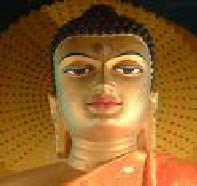Silappadigaram (Silappatikaram) or “The Jewelled Anklet” is traditionally attributed to Ilangovadigal, a grandson of the great Chola king Karikalan who was the greatest among the Sangam Chola and a contemporary of the Chera king Perunjeral Adan. Legend has it that Ilangovadigal was the brother of Chera king Senguttuvan. However, there is a divergence of views among the authorities on the authorship of this great epic in Tamil. But whoever the author of Silappadigaram was, he was a great genius.
The story of Silappadigaram runs thus: Kovalan, the hero of Silappadigaram, is a young merchant of the city of Pugar or Kavirippattinam, the famous port of the Chola kingdom during the Sangam age. He was married to a beautiful woman named Kannagi. After the good times they had for sometime, Kovalan fell in love with the courtesan and dancer Madhavi at the royal court. After living sometime with Madhavi, he returned to her wife but only with all his wealth spent on the danseuse. Since they had no money except a precious pair of anklets of Kannagi, they decided to leave Pugar for great city of Madurai to earn their lost fortunes.
On their arrival at Madurai, Kovalan went to sell one of Kannagi’s anklets to a wicked court jeweller who had misappropriated a similar anklet of the queen of the Pandyan king Nedunjeliyan. Taking advantage of the situation the jeweler informed the king of the anklet brought by Kovalan. Kovalan was executed on the King’s order. Kannagi went to the court of the king and proved her husband’s innocence. Realizing the miscarriage of justice, the king died heart broken. The queen also dies. But this did not lessen the anger of Kannagi. She decided to burn the city of Madurai and in the process tore off one her breasts and threw it at the city and the city was burnt. It was only when the patron goddess of Madurai persuaded Kannagi that she withdrew her curse. Since then Kannagi became the patron goddesses of wifely loyalty and chastity.
The Government of India has instituted an award in honour of Kannagi given to woman.
 |
| A Scene From Silappadigaram |
On their arrival at Madurai, Kovalan went to sell one of Kannagi’s anklets to a wicked court jeweller who had misappropriated a similar anklet of the queen of the Pandyan king Nedunjeliyan. Taking advantage of the situation the jeweler informed the king of the anklet brought by Kovalan. Kovalan was executed on the King’s order. Kannagi went to the court of the king and proved her husband’s innocence. Realizing the miscarriage of justice, the king died heart broken. The queen also dies. But this did not lessen the anger of Kannagi. She decided to burn the city of Madurai and in the process tore off one her breasts and threw it at the city and the city was burnt. It was only when the patron goddess of Madurai persuaded Kannagi that she withdrew her curse. Since then Kannagi became the patron goddesses of wifely loyalty and chastity.
The Government of India has instituted an award in honour of Kannagi given to woman.



